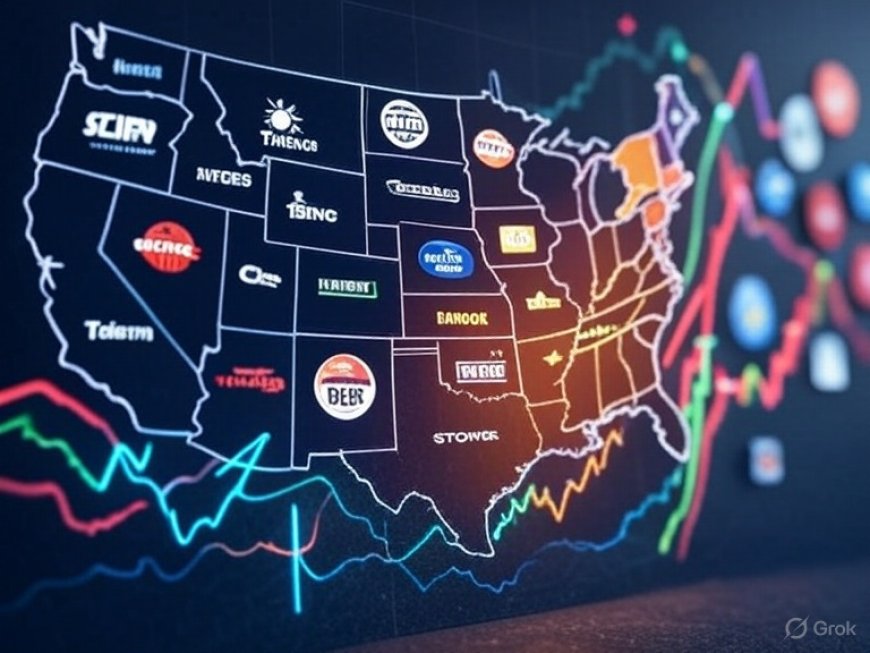Trump-Effect Investments: Tracking New U.S. Pledges from Global Giants (Updated through August 15, 2025)
Foreign giants from Taiwan and Korea unveiled major U.S. investments in 2025. We track the pledges, policies behind them, and what it means for jobs and ROI—updated through Aug. 15, 2025.

Why this matters now
Foreign companies have accelerated U.S. expansion plans in 2025 as the White House links market access to building on American soil. The result is a wave of high-visibility pledges—especially in chips and autos—that could reshape regional economies, supplier networks, and the politics of industrial policy through 2026 and beyond. This piece aggregates what’s public as of August 15, 2025, and offers a framework to judge which announcements are likely to translate into ground-breaking and jobs.
Method note: We classify a “pledge” as a company’s public commitment to U.S. capex, hiring, or new facilities, tied—explicitly or implicitly—to Trump-era policy levers (tariffs, procurement preferences, or expedited approvals). When possible, we list the expected timeline and what would make the pledge “real” (permits, subsidies, customer contracts).
The headline pledges (as of Aug. 15, 2025)
| Company (Home) | Sector | Pledge (US$) | Planned Location(s) | Jobs (est.) | Policy Linkage | Status |
|---|---|---|---|---|---|---|
| TSMC (Taiwan) | Semiconductors | $100B incremental (part of a broader US program up to ~$165B) | AZ (new fabs & advanced packaging) | 6,000–10,000 direct, more indirect | Tariff exemptions/“manufacture-in-US” incentives; CHIPS support | Corporate announcement with WH event; multiple fabs in planning/build. ReutersTSMC |
| Hyundai Motor Group (Korea) | EVs, batteries, mobility tech | $21B (2025–2028) | GA, AL, plus supplier network nationwide | ~14,000 direct (company guidance) | Auto tariff threats; U.S. content rules | Corporate announcement confirmed; projects staged through 2028. ReutersThe Guardian |
| Policy backdrop | — | 100% tariff on imported chips (exemptions for firms making/committing to make in U.S.) | Nationwide | — | Tariffs designed to push on-shoring | Announced Aug. 6; details evolving. Reuters |
Interpretation: The policy architecture—tariffs with carve-outs, plus federal support—has turned capital plans into public leverage points. Firms with U.S. customers and strategic exposure (chips, autos) are moving first.
What’s really driving the money
-
Tariff-with-exemption strategy. The announced 100% chip tariff that exempts companies manufacturing (or committing to manufacture) domestically directly rewards firms that localize production. Expect copy-paste versions in other strategic sectors (batteries, AI hardware). Reuters
-
Scale + signaling. TSMC’s added $100B commitment—on top of previously announced Arizona buildouts—signals to customers and Washington that advanced nodes and packaging will be available onshore, even if unit costs are higher in the near term. ReutersTSMC
-
Tariff hedging in autos. Hyundai’s 2025 expansion plan pairs capacity with a deeper U.S. supplier footprint to blunt tariff risk and qualify for U.S. incentives and procurement preferences. Reuters
Case studies: How to tell a serious pledge from a press release
Case 1: Taiwan’s TSMC — moving from single-fab to U.S. cluster
-
What’s new: An additional $100B over “coming years” for multiple fabs and advanced packaging capacity in Arizona.
-
Why it matters: Moves the U.S. from pilot-scale to meaningful share of leading-edge supply.
-
Execution risk: Labor availability, specialized contractor capacity, and customer commitments at advanced nodes.
-
Milestones to watch: Long-lead tool deliveries, utility hookups, and packaging lines reaching yield. ReutersTSMC
Case 2: Hyundai Motor Group — tariff-proofing the portfolio
-
What’s new: $21B U.S. investment across EVs, software, autonomy, and advanced manufacturing through 2028.
-
Why it matters: Anchors an EV-battery ecosystem in the Southeast; raises local content share.
-
Execution risk: Demand elasticity at higher price points; battery supply chain localization pace.
-
Milestones to watch: Supplier park announcements, workforce pipeline agreements with technical colleges. Reuters
Where the money lands: regional ripple effects
-
Arizona (semiconductors). Construction labor tightness and six-figure tool-install jobs will strain local housing but lift wages; community colleges become talent pipelines for metrology and maintenance.
-
Georgia/Alabama (autos). Tier-1/Tier-2 suppliers co-locating to hit domestic-content thresholds; logistics parks expand near interstates and ports.
-
National suppliers. Specialty gases, cleanrooms, lithography support, and power infrastructure vendors see multi-year order books.
ROI outlook: what investors and communities should model
For companies:
-
Short-term ROIC drag from higher U.S. build costs; offset depends on tariff relief and premium pricing for “secure supply.”
-
Long-term strategic ROI if onshore capacity locks in key U.S. customers (defense, hyperscalers, autos).
For regions:
-
Fiscal gains (income/sales/property taxes) vs. incentive costs (tax abatements, infrastructure).
-
Labor market uplift (training, wage gains) vs. cost-of-living pressure (housing, services).
Risks to watch (and how they could unwind pledges)
-
Policy whiplash. A softer tariff regime or shifting exemptions could reduce the on-shoring premium and delay phases two and three of mega-projects. Reuters
-
Capex inflation. Tool lead times and construction costs can extend timelines beyond 2028, diluting political and economic returns.
-
Grid & water constraints. Semiconductor and battery facilities are energy- and water-intensive; permitting or community pushback could slow ramp.
How our tracker works (and how you can use it)
We maintain a live, proprietary database of “Trump-effect” pledges with fields for: company, home country, sector, pledge amount, location, timing, policy linkage, incentives, job estimates, and milestone status. Each record has a case-study note and an ROI projection (capex payback, local tax impact, and wage effects).
Coming soon for readers:
-
A customizable calculator where you choose a state and sector to see projected jobs, wages, and tax revenues based on inputs like capex, local multipliers, and build schedule.
-
Milestone alerts (e.g., groundbreaking, first-tool-in, first-silicon, SOP for auto plants).
-
A heat map of pledges vs. utility capacity and workforce availability.
Bottom line
The “Trump effect” is less about one headline number than about policy-shaped optionality: companies are buying tariff insurance and supply-chain resilience by planting capital in the U.S. The biggest wins will accrue where execution meets policy durability—states that can deliver permits, power, water, and skilled labor on time will convert pledges into paychecks.
What's Your Reaction?
 Like
0
Like
0
 Dislike
0
Dislike
0
 Love
0
Love
0
 Funny
0
Funny
0
 Angry
0
Angry
0
 Sad
0
Sad
0
 Wow
0
Wow
0








































































